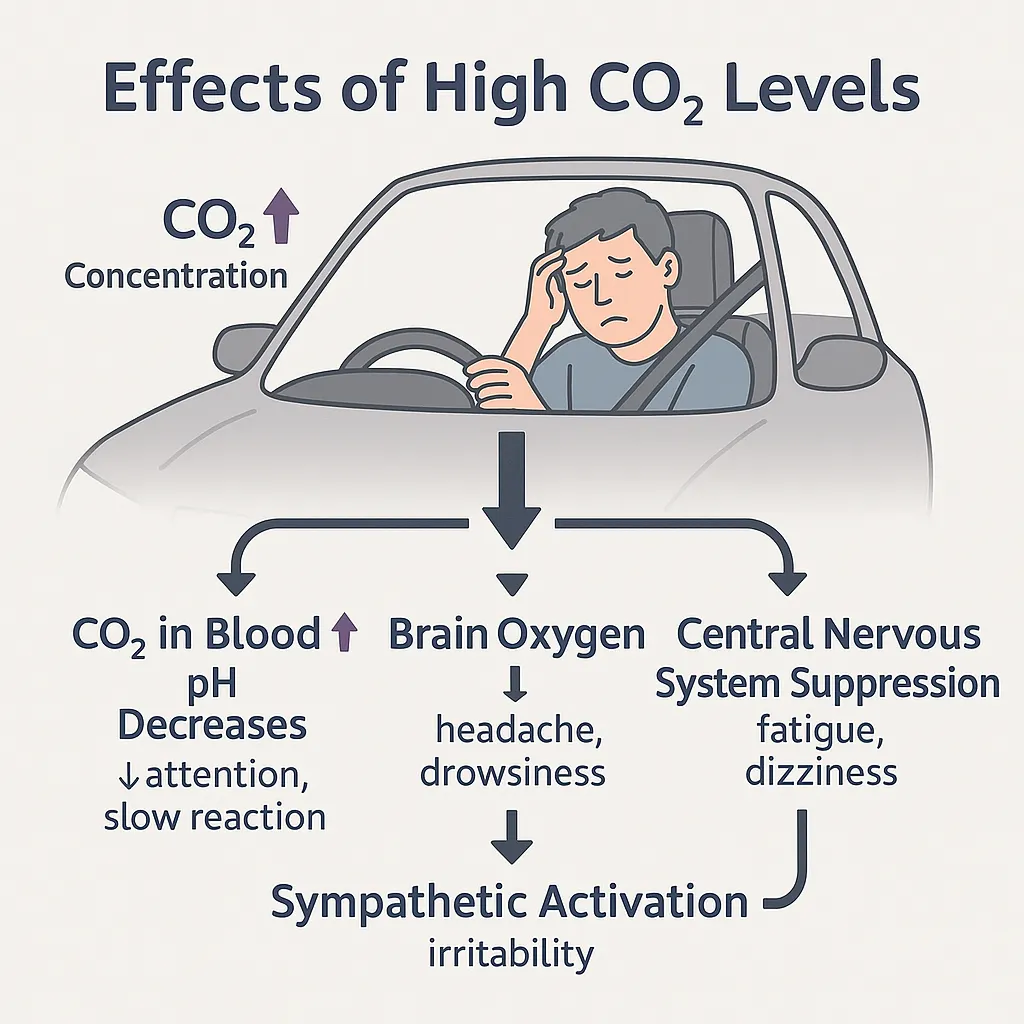We often think about road safety in terms of distractions, fatigue, or even bad weather. But there’s one hidden factor that rarely gets mentioned — yet it affects millions of drivers every day:
Carbon Dioxide (CO₂) buildup inside your car.
You can’t see it. You can’t smell it. But its effects are real — and scientifically proven.
🚗 What Happens When CO₂ Builds Up in a Car?
When you breathe, you exhale CO₂. In an enclosed space like a car — especially with the windows closed and the AC on recirculate — CO₂ can accumulate surprisingly fast.
The more passengers, the faster the buildup.
And while CO₂ isn’t toxic like carbon monoxide (CO), it affects your brain and body in subtle but dangerous ways.
🔬 CO₂ Levels and Their Impact on the Human Body (Backed by Research)
400–800 ppm, feels fresh and comfortable.
800–1000 ppm, Mild stuffiness, slight decline in focus.
1000–1500 ppm, Reduced attention span, slower reaction time, light fatigue begins.
1500–2000 ppm, Noticeable drowsiness, headaches, yawning, irritability. Severe fatigue, impaired judgment, increased risk of error
5000 ppm, Possible hypoxia, nausea, vomiting, risk of fainting — dangerous driving conditions
Source: Indoor air quality research and vehicle cabin environment studies (ASHRAE, Harvard School of Public Health, etc.)
🚦 Why It Matters for Drivers
At just 1500 ppm, you may start yawning.
At 2000+ ppm, your brain function slows down significantly — not enough to make you notice immediately, but enough to impair your judgment, reaction time, and decision-making behind the wheel.
You may feel “tired for no reason” or “mentally foggy” while driving, even if you’re well rested.
CO₂ could be the silent cause.
✅ How to Reduce CO₂ While Driving
Switch AC from “recirculation” to “fresh air” mode regularly
Crack a window, even a small opening makes a big difference
Avoid long periods of idling with windows up
Use a CO₂ monitor to understand your in-cabin air quality
Take breaks and get fresh air on longer drives
Final Thoughts
We talk a lot about distracted driving and fatigue. But there’s another kind of fatigue that creeps up invisibly — caused by the very air we breathe inside our cars.
If you’re driving for long periods — especially with others — CO₂ may be quietly compromising your alertness and safety.
It’s time we paid more attention to what’s in our air, not just how fast we’re moving through it.
http://www.amazon.com/evodevice

Leave a Reply